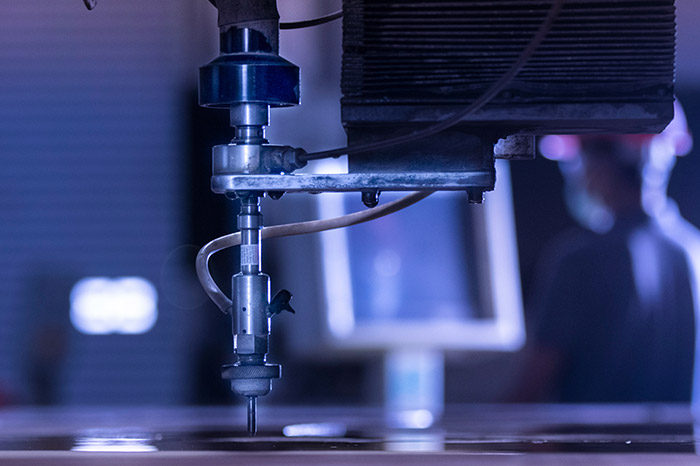
Waterjet cutting is a versatile method of cutting materials using high-pressure water and an abrasive substance. It has become a popular alternative to traditional cutting methods, such as sawing and laser cutting, due to its ability to cut a wide range of materials, from metals to composites, with precision and accuracy. However, waterjet cutting has limitations, and some materials cannot effectively cut. In this article, we’ll explore what materials waterjet cannot cut. View it now to get tips for waterjet marble cutting efficiently.
Materials with high melting points
Waterjet cutting uses high-pressure water to physically break apart materials; the heat generated by the process can cause certain materials to melt. Materials with high melting points, such as tungsten and titanium, cannot be cut effectively using waterjet cutting. The heat generated by the process can cause the material to melt, clog the waterjet nozzle, and damage the cutting surface.
Materials with hardness ratings above 70
Waterjet cutting uses an abrasive substance, such as garnet, to cut materials. The abrasive substance wears away the material as the waterjet cuts, but some materials are too hard for the abrasive substance to cut effectively. Materials with a hardness rating above 70 on the Rockwell scale, such as carbide and sapphire, are difficult to cut using waterjet cutting and may require alternative cutting methods.
Materials with high elasticity
Waterjet cutting works best on brittle materials with low elasticity, as the high-pressure water and abrasive substance can break them apart. Materials with high elasticity, such as rubber and foam, are difficult to cut using waterjet cutting because they tend to deform and stretch rather than break apart.
Materials with low conductivity
Waterjet cutting relies on the heat generated by the process to break apart the material. Materials with low conductivity, such as ceramics and glass, must conduct heat well and are difficult to cut using waterjet. These materials require specialized cutting methods, such as laser cutting or diamond sawing, to cut them effectively.
In conclusion, waterjet cutting is a versatile and effective method of cutting materials, but some materials needs to be more effectively cut. Materials with high melting points, hardness ratings above 70, high elasticity, low conductivity, and high reflectivity are difficult to cut using waterjet cutting and may require alternative cutting methods. When selecting a cutting method for a specific material, it’s important to consider its properties and choose the best cutting method for the job.

